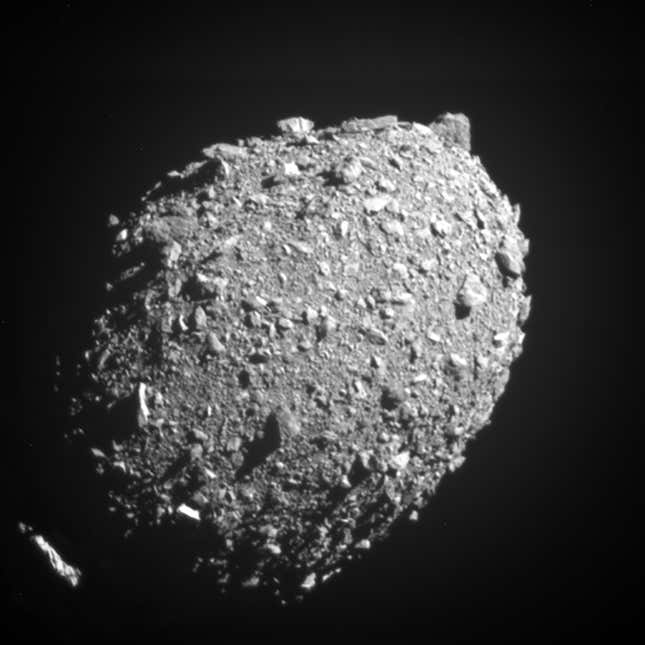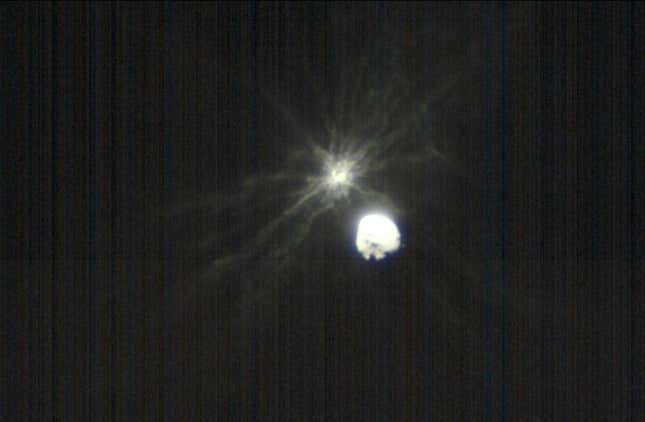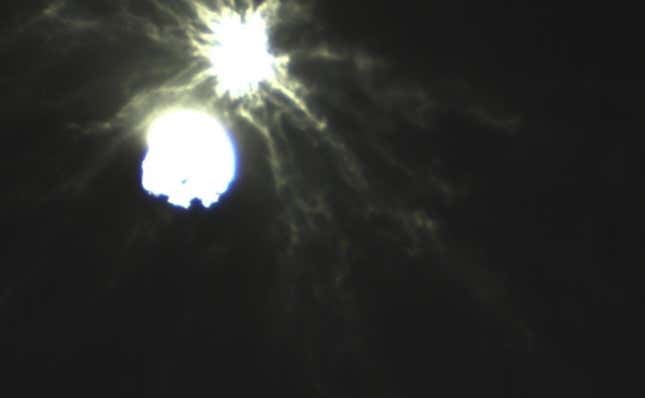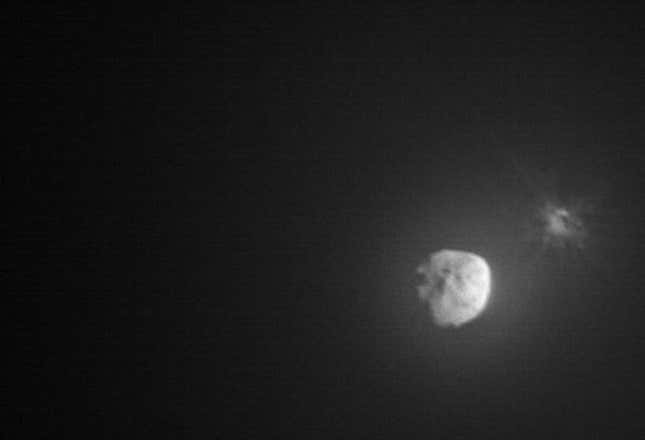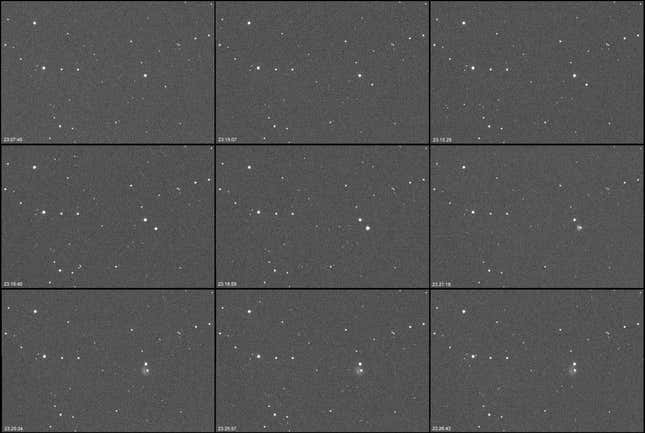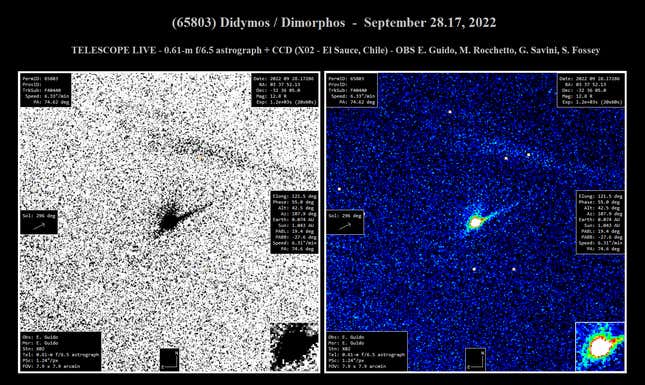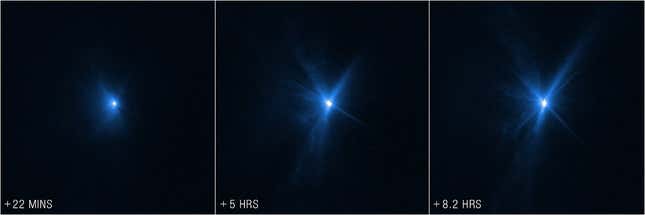
NASA’s DART spacecraft was 6.8 million miles from Earth when it slammed into a football stadium-sized asteroid on Monday. Despite this immense distance, images from the impact and its aftermath are coming in, and they’re proving to be better—and far more bizarre—than we expected.
Going into Monday’s test, it wasn’t clear how much of the Double Asteroid Redirection Test we’d get to see. At the very least, we were hoping to get the POV experience from DART’s onboard camera, called DRACO, and views from the shoebox-sized LICIACube, which trailed closely behind NASA’s doomed spacecraft. They didn’t disappoint.
We also knew that telescopic eyes would be watching from a distance, including ground-based observatories and two fairly famous space-based telescopes, Hubble and Webb. Again, they didn’t disappoint.
It’s still early in terms of the data gathering, but the combined result is that we’re getting a reasonably clear picture of what happened when DART slammed into Dimorphos. This is fantastic in terms of engaging the public in what is a very important mission to deflect an asteroid, but also in terms of the science needed to figure out if it actually worked.

